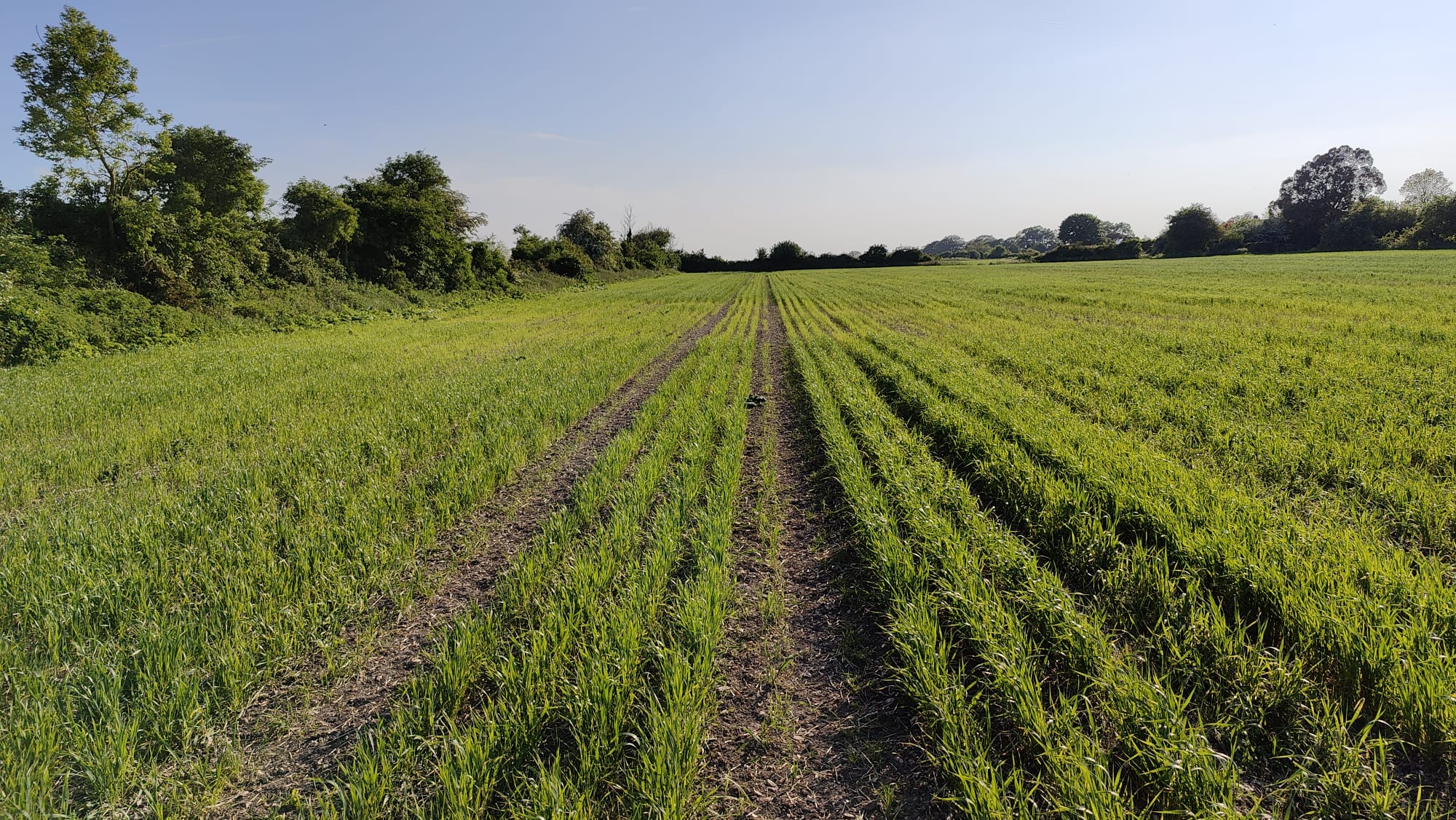It’s been a difficult spring but as warm weather settles in across the UK, combinable crops have turned a corner. We catch up with three growers to find out how their crops are looking:
Edward Vipond, Suffolk
Farm manager at Troston Farms in Suffolk, Edward Vipond, is responsible for more than 1,400ha. Soil types are very varied, ranging from blow away sand to heavy clay. He describes this spring as ‘very challenging’: “Mother nature certainly reminded us who’s boss!” he says. “Everything has been drilled later than normal. Now, however, crops are generally looking good.”
“The wheat has plenty of potential. Leaf four is clean, which is great news, I just hope the sunshine continues for the rest of May.”
None of the wheat on Edward’s farm is September drilled – partly because of black-grass but also to reduce disease pressure. He says just 10 days difference in drilling date has a significant impact and with this year’s wet weather, it’s been fundamental.
“We’ve had to invest more in fungicides than ever before due to this year’s disease pressure,” explains Edward. “I grow milling wheat for Warburtons, and varieties like Skyfall are notorious for yellow rust. While Crusoe is not too bad as a rule, it has had some rust in it this year.
“As I felt that there was potential in the crops, I spent more at T1 than usual – some of the winter wheat had Ascra and tebuconazole, the rest had Revystar, depending on disease pressure and drilling date. T3 is coming up and that will be will be targeting ear disease rather than being a flag leaf top up.”
“Elsewhere on the farm, the early drilled spring barley looks fantastic, but the later drilled crop, which is on heavier land, is struggling with wet feet. The ground was tender when we drilled it and as a result the wheelings are clearly visible.
“Second wheats look well. The rye is fantastic but there’s brown rust lurking in the bottom of the canopy. After a late start, the sugar beet is catching up quickly and I’d anticipate that the maize will be coming through in around 7 days.”
Nigel Durdy, Yorkshire
Nigel farms 1,100ha in partnership with his brother. The land covers a wide range of soils, from blow away sand to peat, loams and boulder clay. This year he’s 240 ha of winter wheat in the ground and, like so many, has had to deal with a difficult spring.
“We missed some of the T0’s – it was too wet initially and then too cold and then before we knew it, we were at T1. Fortunately, T1’s were applied at the ideal time – the window was there although the weather was variable.”
Now, with flag leaves fully emerged, Nigel is applying Revystar at T2. “It has been so wet we needed to keep the Septoria cover up. I couldn’t see any point in waiting so I’ve gone a little bit early. We are applying a robust fungicide programme and now we have entered into a dry and hot period so the Septoria will abate a little bit.”
With wet, cool weather dominating the spring, it’s been drilling date, rather than variety, that’s determined disease pressure in Nigel’s winter wheat. “We grow four varieties, Costello, Skyscraper, Skyfall and Graham,” he explains. “Graham, as you’d expect, has probably been the cleanest, but there’s not been much between them.
“Earlier drilled crops have had more Septoria, most likely a result of weather prompting more vegetative growth at the bottom of the crop.”
Nigel’s spring barley was drilled in April at a high seed rate to facilitate black-grass control, and is currently sitting at growth stage 32-33. Maize is replacing oilseed rape as a break crop and Nigel completed drilling on Saturday. He says he is looking forward to combining it for the first time this year. “We’re experimenting this year as prices for anaerobic digestion are variable,” he notes.
Anthony Pearce, Buckinghamshire
Anthony farms over 350ha of combinable crops in Buckinghamshire, across the joint venture and contract land is a mix of soil types from heavy clay to lighter chalk. A significant proportion of the acreage is winter wheat, predominantly Extase, and he’s a firm focus on maximising yields.
“It’s full of potential,” he says. “Black-grass is starting to appear on the heavier land but overall, the winter wheat is looking very promising. The weather means Septoria pressure is high so we’ve invested more in fungicides – at T2 we upgraded to Revystar – to try and support crop genetics.
“The winter beans are looking good. They’ve benefited from the rain we’ve had. The downside of those conditions was the chocolate spot that came into the crop. That’s been treated at early flowering but is running out of steam now, and will be needing another application.
“Spring wheat is a story of two halves. The February-drilled crops on the lighter land are romping away. On the heavier land, a little was drilled in March, the majority was sown in April. It’s not enjoyed life at all; the heavy rain in March hampered its development.
“We seem to be getting more bird damage. Those crops which had a couple of extra passes post-drilling have kicked on, but those that were delayed drilled and had to wait before being rolled have suffered.”

